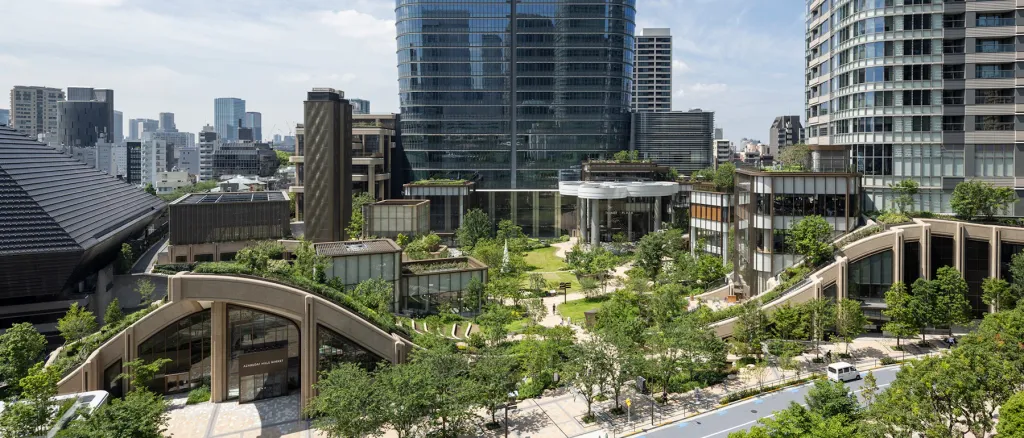One month after Tokyo Gendai closed its third edition—and its first in a new September slot—with solid, if unspectacular, sales, the head of Pace Japan did a bit of cheerleading for the local market.
“I want Tokyo to be the center of art in Asia,” Kyoko Hattori, vice president of Pace Japan, told the Japan Times on Tuesday. “I want to see it happen.”
The arrival of Pace last year has been viewed, at least locally, as evidence that Tokyo has arrived. With some justification: Pace is now the only mega-gallery with a location in the city—unless one counts Perrotin, which operates three spaces there and has a long engagement with Japan and its artists. The opening of Pace’s gallery in the ritzy $4 billion Azabudai Hills development, like the launch of Tokyo Gendai in 2023, was treated as a major event, with journalists and international collectors flying in for the fanfare.
As New York–based dealer Sundaram Tagore told Nikkei in September, Pace is seen as “a guidepost for other galleries” looking to expand into the Japanese market.
Those expansions come amid cautiously optimistic data. The most recent UBS Art Basel Art Market Report found that Japan saw 2 percent growth last year, even as the wider art market contracted by 12 percent. Japan’s primary competitors—China (including Hong Kong) and Korea—saw drops of 31 percent and 15 percent, respectively. Still, Japan operates on a different scale than Asia’s leading market, China, which accounts for 15 percent of global art sales by value; Japan has a mere 1 percent, as does Korea.
For decades, Japan’s art scene was viewed as local and largely inward-looking. That may be changing. Marc Glimcher told Nikkei that at Tokyo Gendai, works by Robert Longo “flew off the walls,” selling mainly to Japanese collectors. “I don’t know who these people were, but they flooded in,” he said. Tagore, who also exhibited at the fair, described “a robust response” to the gallery’s programming, which skews “very global.”
“I take that as an indication that the audience in Japan is becoming more connected to the international art world,” Tagore said.
This isn’t the first time the market has turned its sights toward Tokyo. During the boom years of the 1980s, Japanese collectors were paying record prices for Western art. What’s different this time, however, is that this new wave appears to be arriving amid a broader market slowdown. The byword for collectors today is slowness, deliberation, and restraint—a pace that Glimcher and Hattori both suggested suits Japanese buyers.
“Tokyo has not been part of that overexcess,” Glimcher told the Japan Times, referring to the speculative frenzy of the post-pandemic market.
“I find Japanese collectors are less focused on investment value,” Hattori told the paper. “It’s less transactional, which I think is great. They do not hire advisers … If you visit a Japanese collector’s home, each collection is very different.”
“If we bring them global, high-quality works, they are very enthusiastic to buy,” she added. “They’re not interested in parties, but they really want to enjoy art.”
Still, there are structural challenges to Tokyo’s ambitions. Taxes remain a persistent issue, though according to Nikkei, international galleries and fairs can now avoid a 10 percent upfront tax on artworks brought in for sale by applying for free-port status. The tax still must be paid—but only once the work is sold. The government, meanwhile, seems to recognize the need for reform: a Ministry of Economy, Trade, and Industry report published last year called for “increasing investment in and demand of art” to “help promote industrial restructuring.”
Those moves appeared to buoy Glimcher’s optimism. “If [Japan] can continue to recruit more galleries, and if the government makes it easier to do business in terms of taxes and moving art in and out of the country, they are primed to become an important city for art,” he said.
Yet the global art world’s expansion has lately shifted its gaze elsewhere. Art Basel and Frieze recently announced new fairs in Qatar and Abu Dhabi, respectively—the former stacked with mega-gallery exhibitors. And Pace, for all its engagement with the Asian market, closed its Hong Kong location earlier this month. (Perrotin also just closed its Hong Kong gallery.)
In the Japan Times interview, Hattori acknowledged the question looming over Tokyo’s ascent: whether international galleries have the capacity—or appetite—to operate in Hong Kong, Seoul, and Tokyo simultaneously.
“Would they open three locations in Asia? I think that’s also the challenge,” she said.
